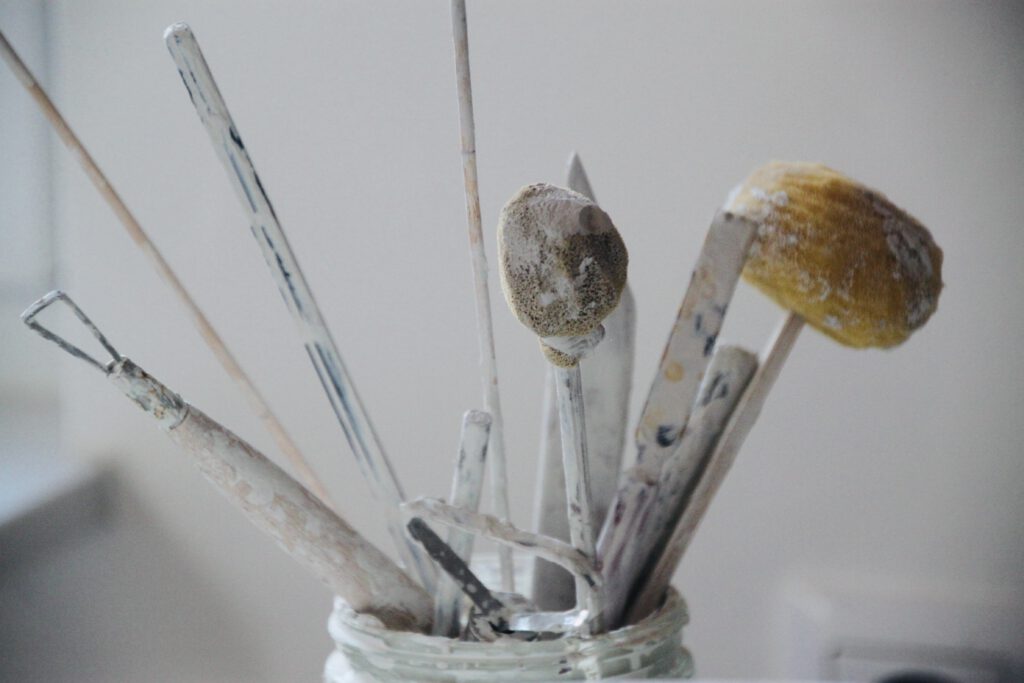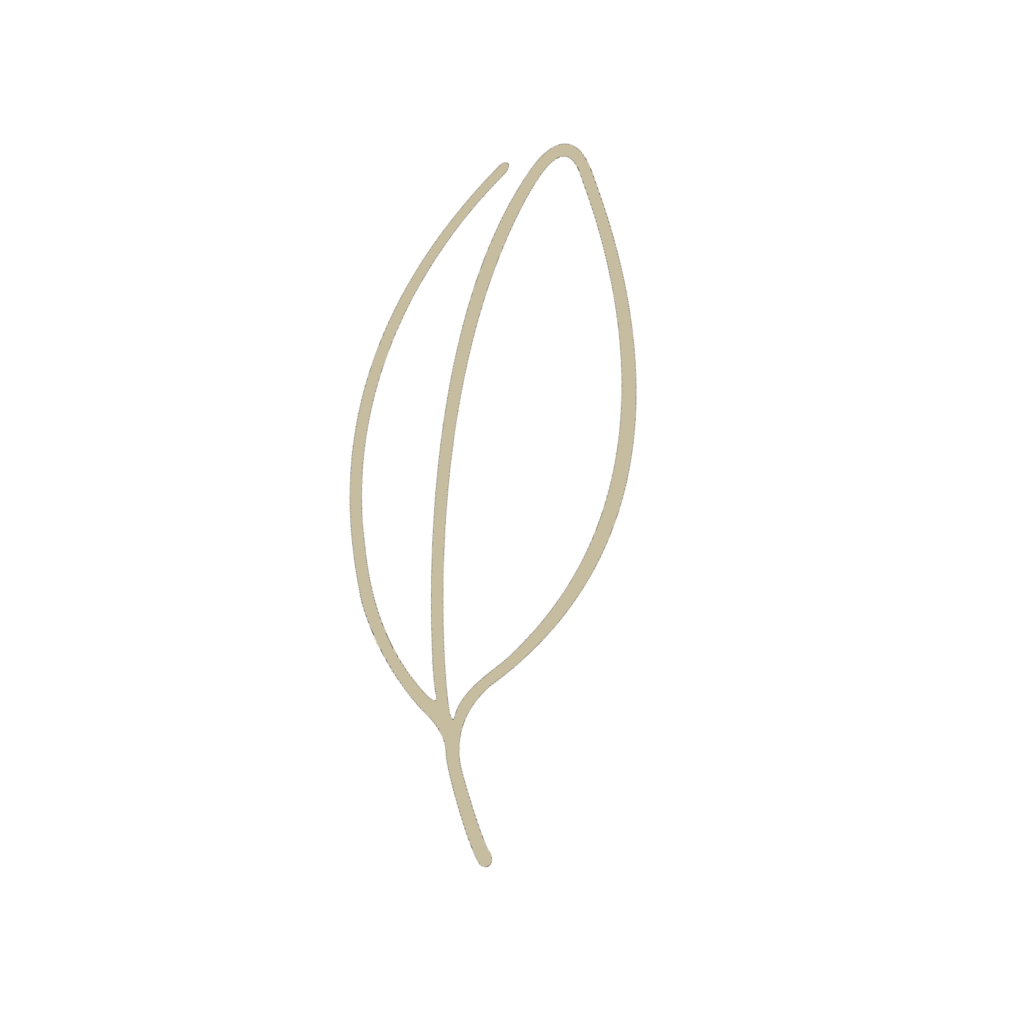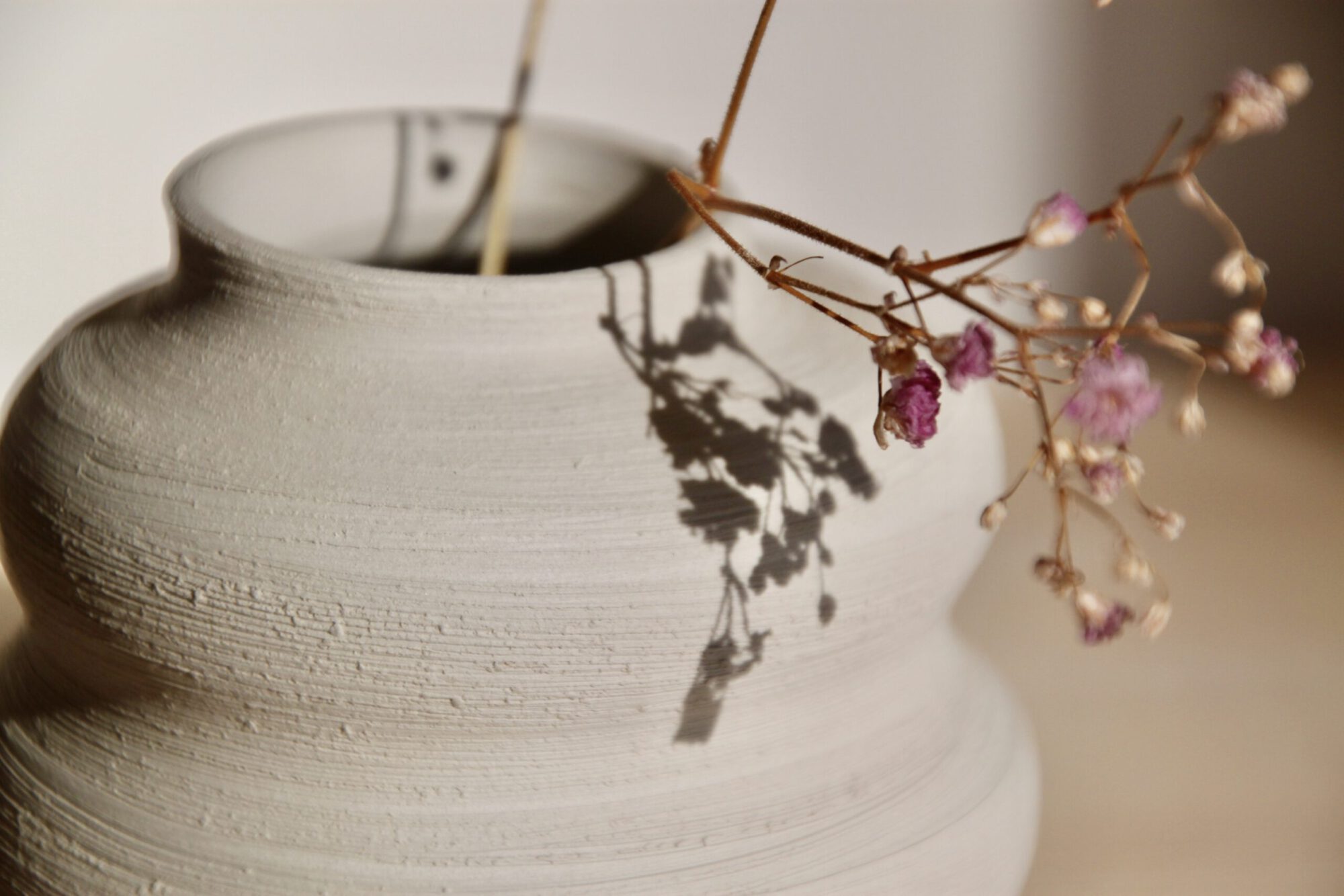In the production of a ceramic piece, each step relies on the other.
It starts with the kneading and preparation of the clay; the clay is kneaded to avoid air bubbles and weighed to keep the size of the respective vessel as consistent as possible.
Ceramics can be created in many different ways. I use the slab technique or throwing on the potter’s wheel to make them.
In the slab technique, the clay is rolled out evenly, cut to size and assembled by slip, a kind of clay glue. A wide variety of shapes can be created in this process.
Throwing requires a potter’s wheel. Round shapes are created in this process. The basic shape is usually a cylinder, which is then expanded, slimmed or reduced as desired to obtain the final shape.
The clay pieces are still very delicate after these two processes and contain a lot of water. By drying for a certain period of time, the pieces become leather hard and can be further processed. In this step, it is possible to trim the vessels. Excess clay is removed here. Other shapes or parts are added, such as handles.
Up to this point, the vessels can be soaked in water at each step, thus restoring the clay to its original state. In this way, the clay can always be reprocessed and recycled.
Once the pieces are completely dry, they are fired for the first time. At a temperature of 950°C, the remaining moisture is released and the clay becomes bisqueware. From this point on, the clay is no longer recyclable as such. It cannot return to its previous state and becomes a ceramic.
After this firing, the pieces are glazed. When dipped in the glaze, the pieces absorb the glaze water. A powdery layer remains on the surface, which melts in the second firing, resulting in a solid glaze. Once the ceramic has been fired at 1250°C, it is waterproof and ready for use.
All these steps show that for pottery making, time and tranquility are significant in many ways.
At the same time, this manual work teaches me to accept that each vessel is truly unique and there is no spitting image, to find perfection in imperfection, and to see beauty precisely in that.




